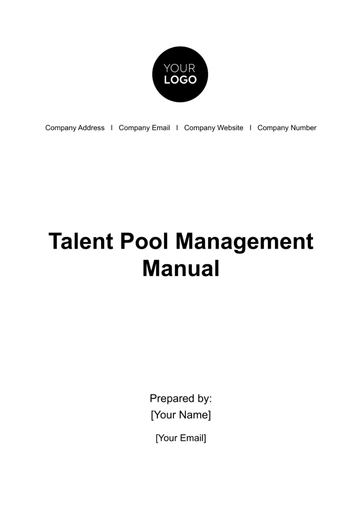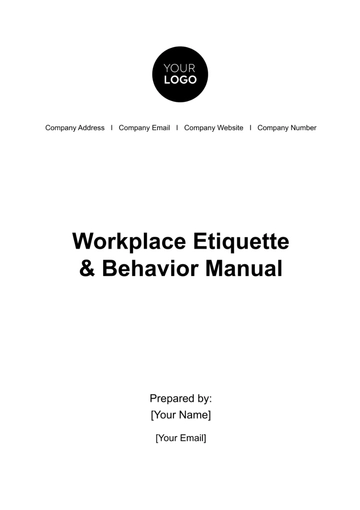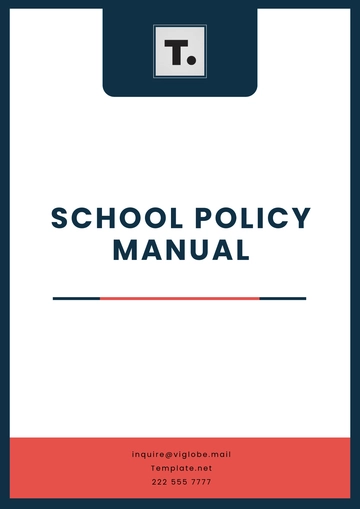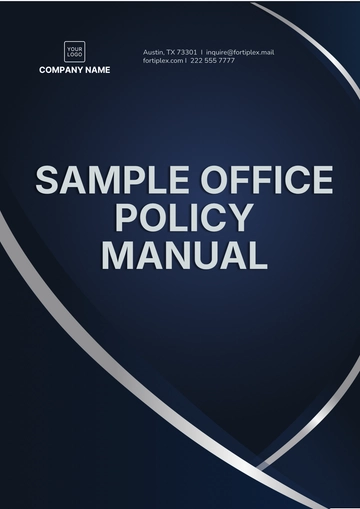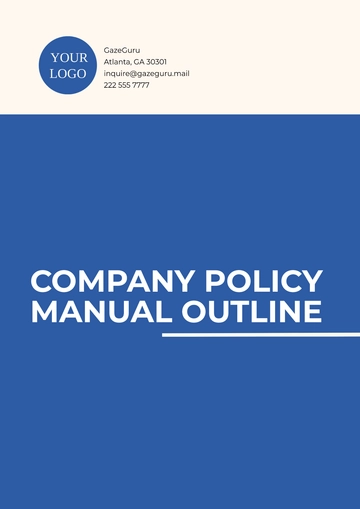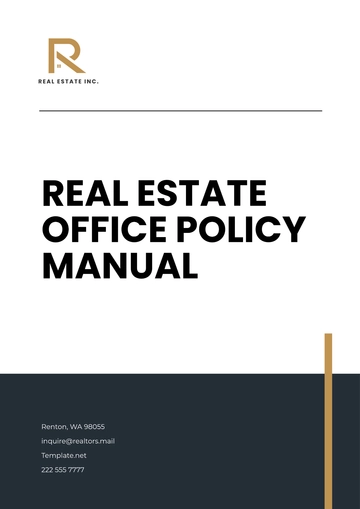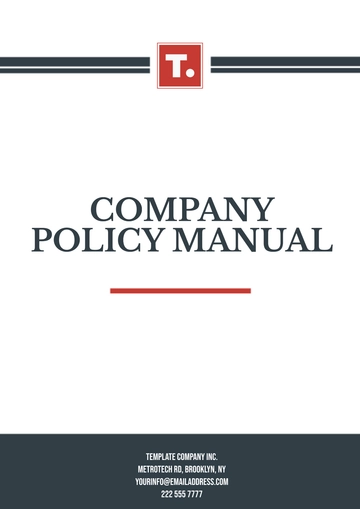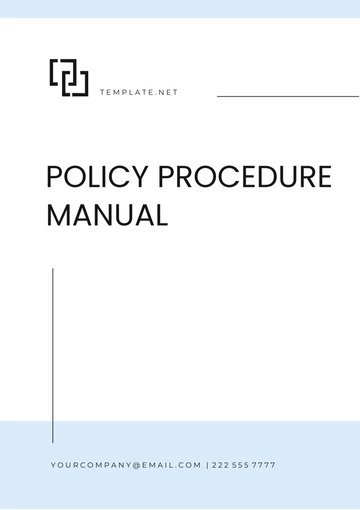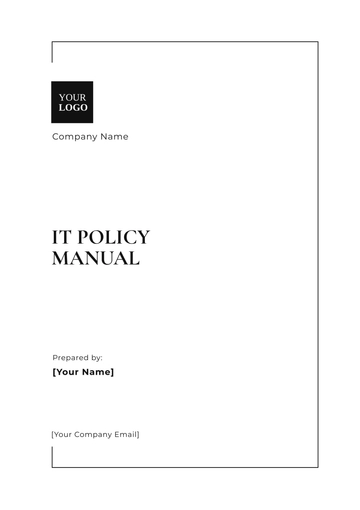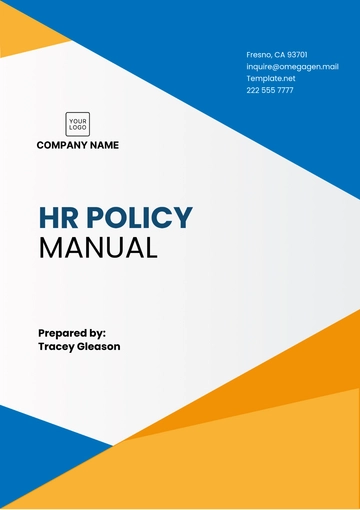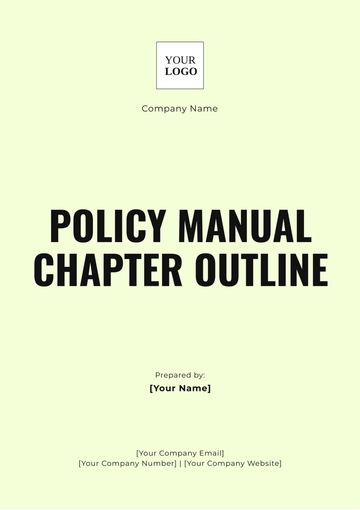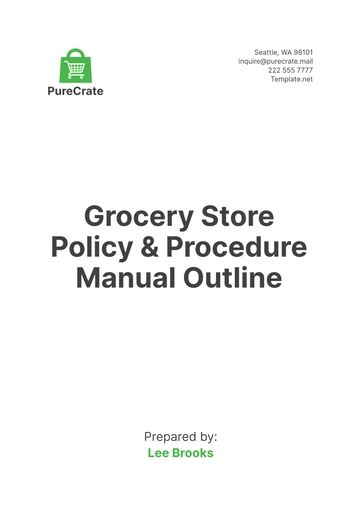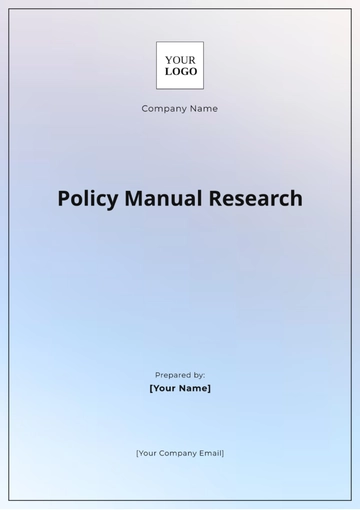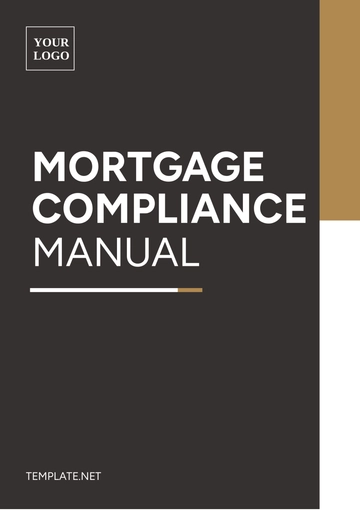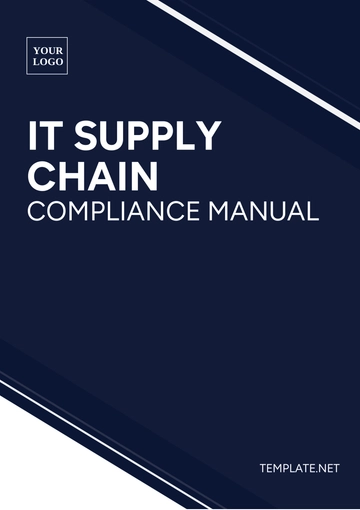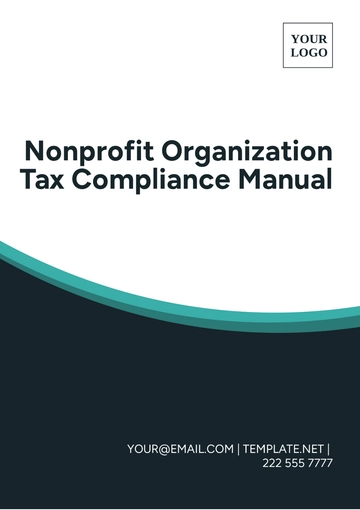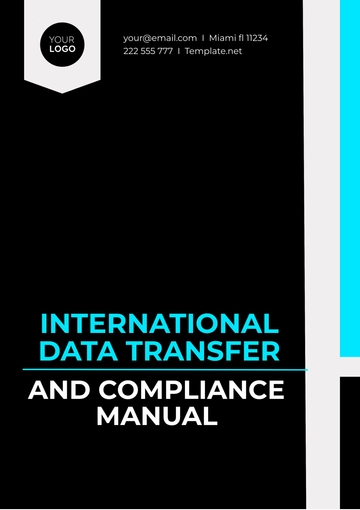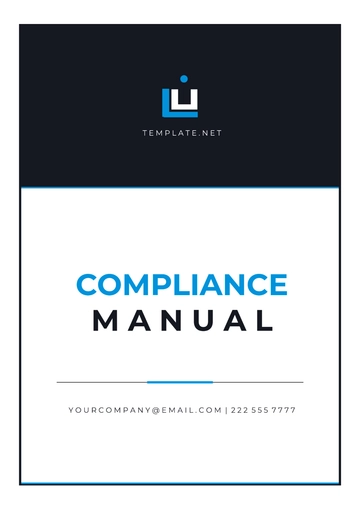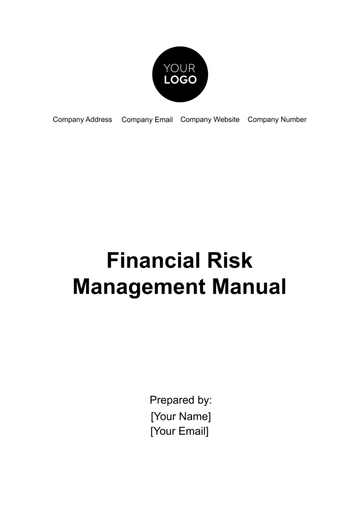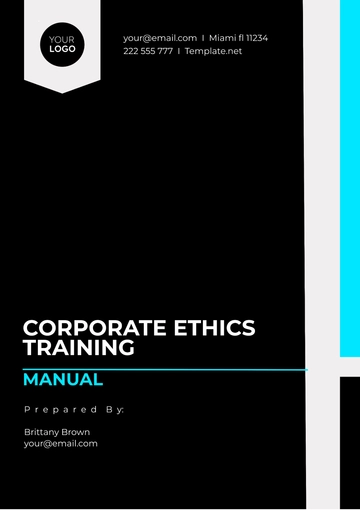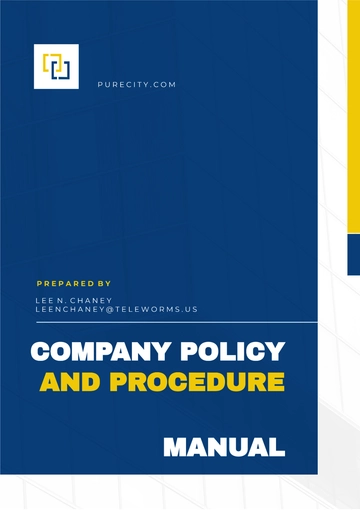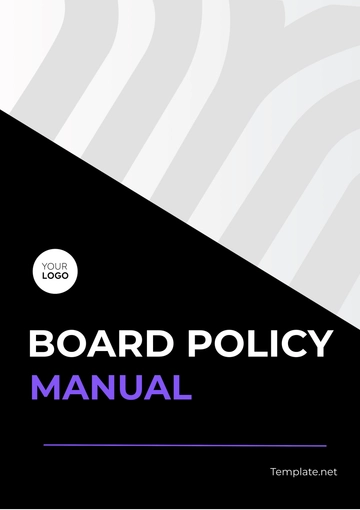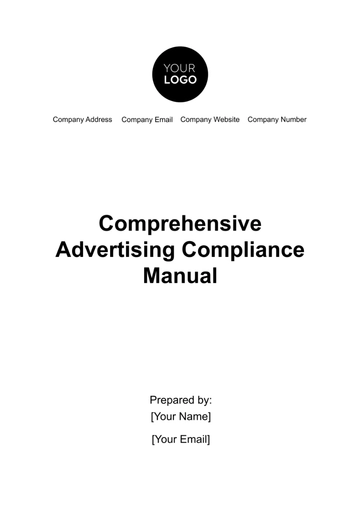Free Safety Policy Manual
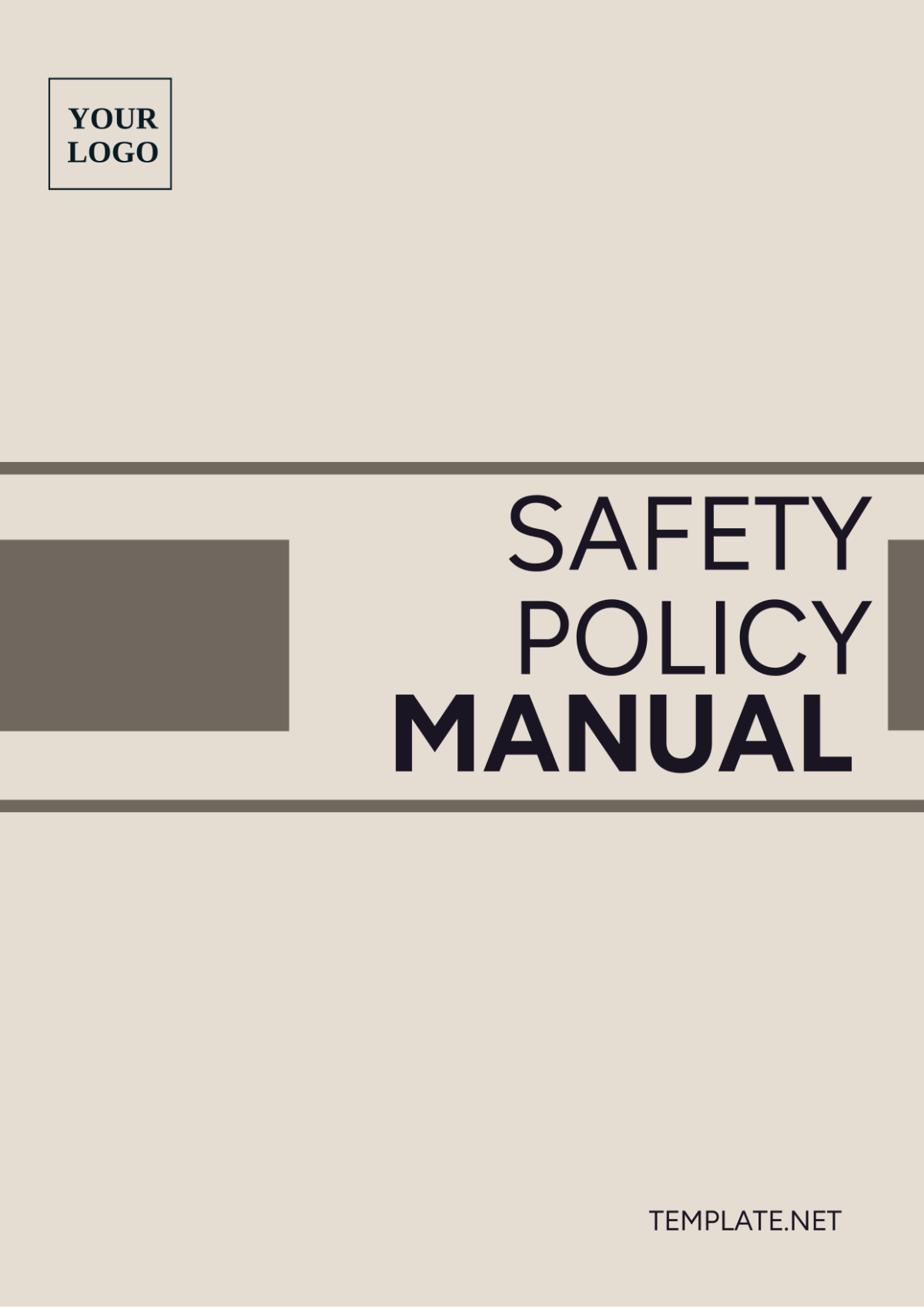
NAME: | COMPANY: | DEPARTMENT: | DATE: |
|---|---|---|---|
[YOUR NAME] | [YOUR COMPANY NAME] | [YOUR DEPARTMENT] | [DATE] |
I. INTRODUCTION
Welcome to the SAFETY POLICY MANUAL for [YOUR COMPANY NAME]. Safety is a core value of our organization, and this manual serves as a comprehensive guide to our safety policies, procedures, and practices. By adhering to the guidelines outlined in this manual, we aim to create a safe and healthy work environment for all employees, contractors, and visitors.
In this section, you will find an overview of the importance of safety in our organization, the scope of this manual, and the key principles that guide our commitment to safety excellence. Understanding and implementing these policies and procedures are essential for preventing accidents, injuries, and occupational hazards, and ensuring the well-being of everyone in our workplace.
II. SAFETY MANAGEMENT SYSTEM
A. Policy Statement
Commitment to Safety: [YOUR COMPANY NAME] is committed to providing a safe and healthy work environment for all employees. Safety is our top priority, and we are dedicated to preventing accidents, injuries, and occupational illnesses through proactive safety management.
Employee Responsibility: All employees are responsible for adhering to safety policies and procedures, reporting hazards, and actively participating in safety initiatives to maintain a safe workplace.
B. Safety Organization
Safety Committee: [YOUR COMPANY NAME] establishes a safety committee comprised of representatives from different departments to oversee safety initiatives, review safety performance, and make recommendations for improvement.
Safety Officer: A designated safety officer is responsible for coordinating safety activities, conducting safety audits, and providing guidance on safety matters throughout the organization.
III. SAFETY TRAINING
A. New Employee Orientation
Safety Induction: All new employees undergo a comprehensive safety induction program to familiarize them with safety policies, procedures, and emergency protocols.
Job-Specific Training: Employees receive job-specific safety training relevant to their roles and responsibilities, including hazard recognition, safe work practices, and use of personal protective equipment (PPE).
B. Ongoing Training and Development
Refresher Training: Regular refresher training sessions are conducted to reinforce safety knowledge, update employees on new regulations or procedures, and address any emerging safety concerns.
Specialized Training Programs: Employees involved in specialized tasks or operations receive additional training to ensure competency and proficiency in handling specific hazards and risks.
IV. HAZARD IDENTIFICATION AND RISK ASSESSMENT
A. Hazard Identification
Employee Involvement: Employees are encouraged to actively participate in hazard identification processes by reporting potential hazards and near misses to their supervisors or safety representatives.
Regular Inspections: Routine workplace inspections are conducted to identify potential hazards, assess risks, and implement control measures to mitigate or eliminate hazards.
B. Risk Assessment
Risk Evaluation: Risks associated with identified hazards are assessed based on severity, likelihood, and potential consequences to determine appropriate control measures and prioritize safety interventions.
Risk Mitigation: Control measures are implemented to reduce or eliminate identified risks, including engineering controls, administrative controls, and personal protective equipment (PPE).
V. EMERGENCY PREPAREDNESS AND RESPONSE
A. Emergency Planning
Emergency Response Plan: [YOUR COMPANY NAME] develops and maintains an emergency response plan outlining procedures for responding to various emergencies, including fire, medical incidents, natural disasters, and hazardous material spills.
Evacuation Procedures: Clear evacuation procedures, evacuation routes, and assembly points are established and communicated to all employees to ensure a prompt and orderly evacuation in the event of an emergency.
B. Emergency Response Training
Drills and Exercises: Regular emergency drills and exercises are conducted to test the effectiveness of emergency response procedures, familiarize employees with their roles and responsibilities, and identify areas for improvement.
First Aid and CPR Training: Employees receive training in first aid, cardiopulmonary resuscitation (CPR), and use of automated external defibrillators (AEDs) to provide immediate assistance in medical emergencies.
VI. INCIDENT REPORTING AND INVESTIGATION
A. Reporting Procedures
Incident Reporting: Employees are required to report all workplace incidents, accidents, near misses, and hazardous conditions to their supervisors or designated safety personnel as soon as possible.
Documentation: Detailed incident reports are documented, including information about the nature of the incident, individuals involved, contributing factors, and corrective actions taken.
B. Investigation Process
Root Cause Analysis: Thorough investigations are conducted to identify the root causes of incidents and near misses, using techniques such as root cause analysis (RCA) to determine underlying factors and prevent recurrence.
Corrective Actions: Corrective actions are implemented based on the findings of incident investigations to address underlying issues, improve safety performance, and prevent similar incidents in the future.
VII. SAFETY COMMUNICATION AND TRAINING
A. Communication Channels
Safety Meetings: Regular safety meetings are held to discuss safety topics, share information, and communicate updates on safety policies, procedures, and initiatives.
Notice Boards and Bulletins: Safety information, alerts, and reminders are posted on notice boards and circulated through bulletins or newsletters to keep employees informed and engaged in safety matters.
B. Training Programs
Training Workshops: Specialized training workshops and seminars are conducted to address specific safety concerns, provide advanced training on safety topics, and enhance employees' knowledge and skills.
Online Training Resources: Accessible online training resources, such as e-learning modules and webinars, are available for employees to access at their convenience and expand their understanding of safety principles.
VIII. SAFETY PERFORMANCE MONITORING AND EVALUATION
A. Safety Metrics
Key Performance Indicators (KPIs): Relevant safety KPIs are established to measure and monitor safety performance, including incident rates, near-miss reporting, compliance with safety procedures, and effectiveness of corrective actions.
Safety Audits and Inspections: Regular safety audits and inspections are conducted to assess compliance with safety standards, identify areas of improvement, and ensure the effectiveness of safety management systems.
B. Continuous Improvement
Lessons Learned: Lessons learned from incidents, near misses, and safety observations are documented and shared across the organization to facilitate continuous learning and improvement in safety practices.
Safety Culture Surveys: Periodic safety culture surveys are conducted to gauge employee perceptions of safety, identify areas of strength and weakness, and inform targeted interventions to strengthen safety culture.
IX. CONCLUSION
Congratulations on completing the SAFETY POLICY MANUAL for [YOUR COMPANY NAME]! This manual serves as a comprehensive resource for promoting a culture of safety excellence within our organization. By adhering to the policies, procedures, and practices outlined in this manual, we can create a safe and healthy work environment for all employees.
- 100% Customizable, free editor
- Access 1 Million+ Templates, photo’s & graphics
- Download or share as a template
- Click and replace photos, graphics, text, backgrounds
- Resize, crop, AI write & more
- Access advanced editor
Discover the pinnacle of safety protocol with our meticulously crafted Safety Policy Manual Template, exclusively on Template.net. Seamlessly editable and fully customizable, this comprehensive manual empowers you to tailor safety policies to your organization's unique needs. Elevate your safety standards effortlessly with editable templates, accessible through our user-friendly Ai Editor Tool.
